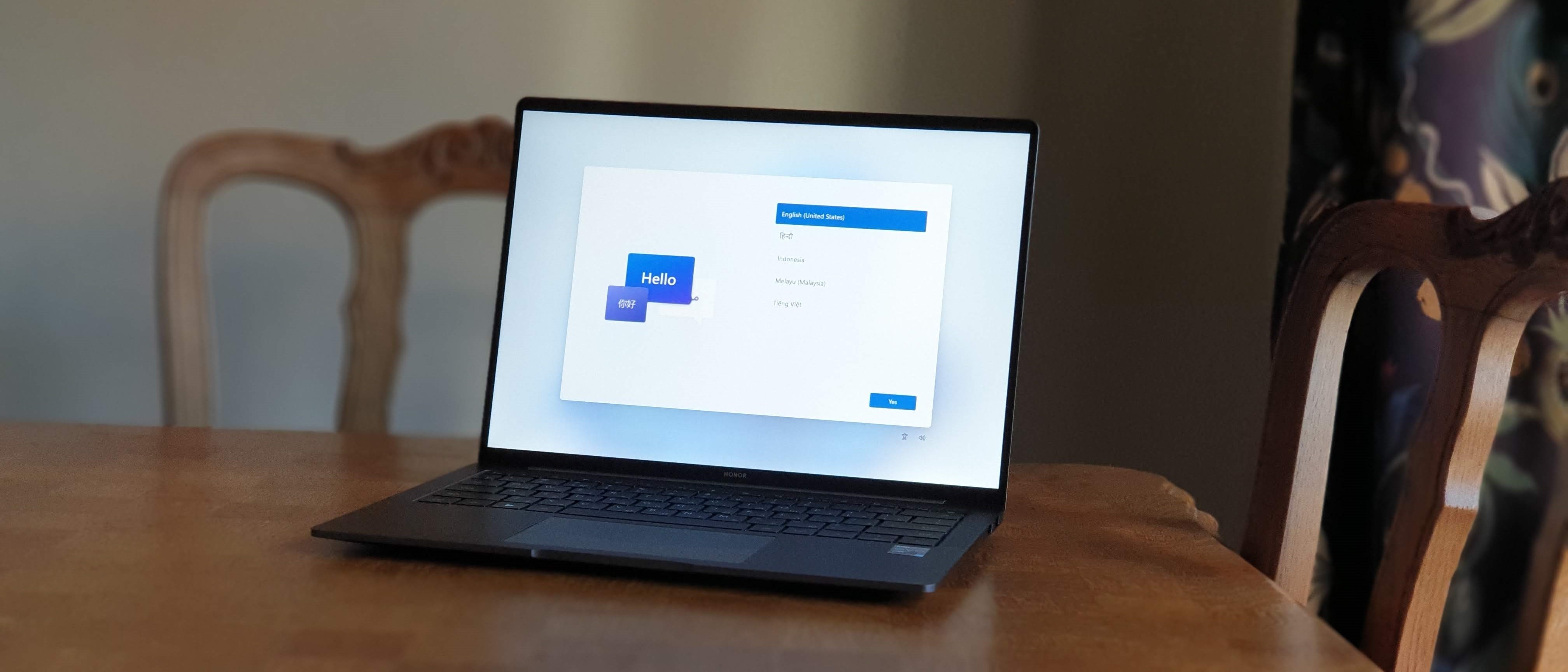TechRadar Verdict
We like the Honor MagicBook View 14, a lot. However, while we can gloss over most of the issues on our list, the one that won’t get solved imminently is global availability and localization of the device for the rest of the world. That’s a real shame.
Pros
- +
Higher than usual screen resolution
- +
NFC
- +
Excellent performance
- +
Exquisite design
- +
3:2 aspect ratio
- +
Superior audio quality
Cons
- -
Battery life could be better
- -
Not enough ports
- -
Both TB4 ports located on one side
- -
No card reader
- -
Quasi non-existent support outside of official territories
Why you can trust TechRadar
Two minute review
Honor’s latest flagship laptop will be well received by professional users looking for something different with some compelling features for a business use case. However we do not understand why Honor only rolled it out to three territories (Russia, France and Belarus) outside of China when it could easily have done so.
That aside, the laptop is a very well executed product and one that - if it ticks the right boxes for you - should be on your list of best business laptops. The screen is a pleasure to work with, it is fast enough for most tasks, even graphics intensive one, the touchpad is huge, the webcam is one of the best around and so is the audio subsystem. Only the slightly disappointing battery life and the placement of the Thunderbolt 4 ports are worth mentioning in the “to be improved” section.
Pricing and availability
You can’t buy the Honor MagicBook View 14 in the UK or in the US. We do understand the hesitation when it comes to the latter but can’t understand the rationale behind foregoing the United Kingdom (where the Honor 50 launched late last year). The laptop is on sale in France for just under 1,100 Euros (about £920, $1,240, AU$ 1,730). If you are adventurous enough to attempt changing the language on a Chinese laptop, then you can purchase Honor’s latest flagship product on Banggood for $1,180 (about £870, AU$1,650). Note that local taxes and delivery fees are excluded.
- Want to buy tech from online Chinese retailers? Read this first.
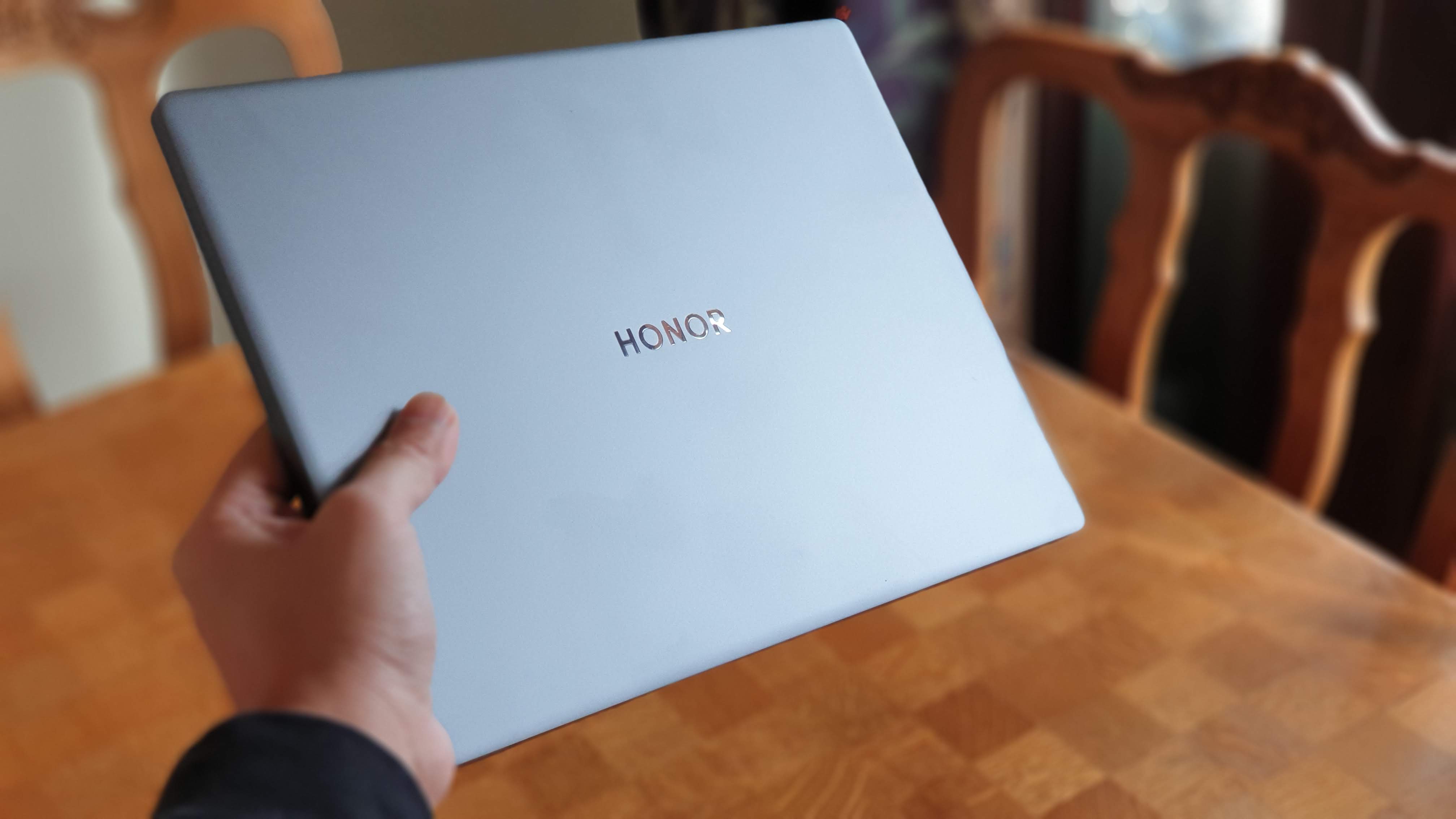
Design
It is difficult to ignore the influence Apple’s legendary MacBook Pro range had on Chinese laptop manufacturers like Huawei, Honor or Xiaomi. The minimalist looks of the aluminum alloy chassis (available in Space Gray or Blue Hour) go hand in hand with the brushed metallic finish that delivers a premium feel to the product. Other than the Honor logo and a couple of stickers, the surface of the MagicBook View 14 is pristine.
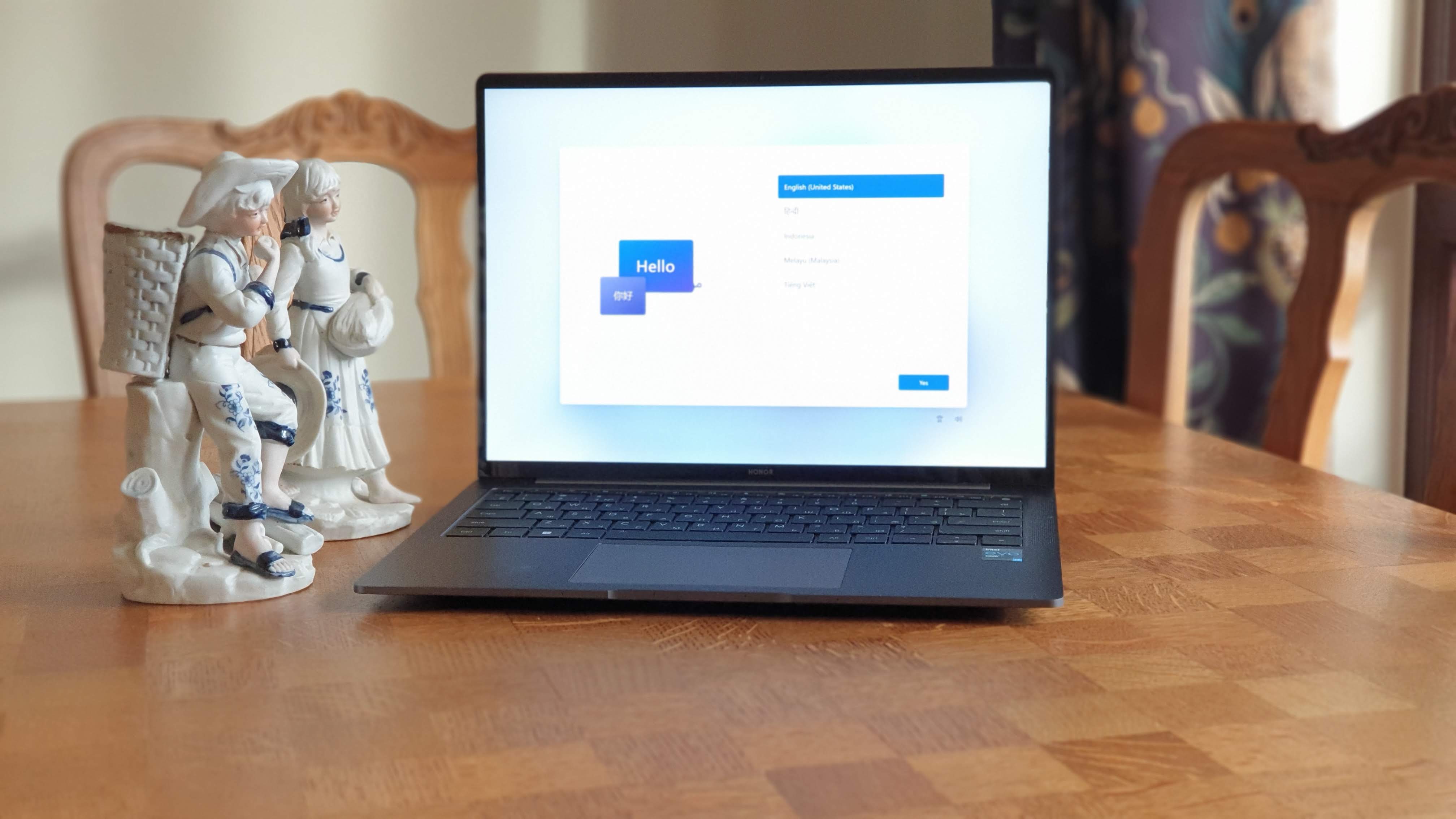
Open its lid and you’re met with a slab of glass, a black mirror that peers back at you. This is the 14.2-inch touchscreen display with a 3:2 aspect ratio, a refresh rate of up to 90Hz and a resolution of 2520 x 1680 pixels (that’s more than twice the number of pixels on a full HD display). With a screen-to-body ratio of 90.5%, it comes as no surprise that its bezels are minuscule, especially at the top and near the bottom and connected to the keyboard via a long hinge.
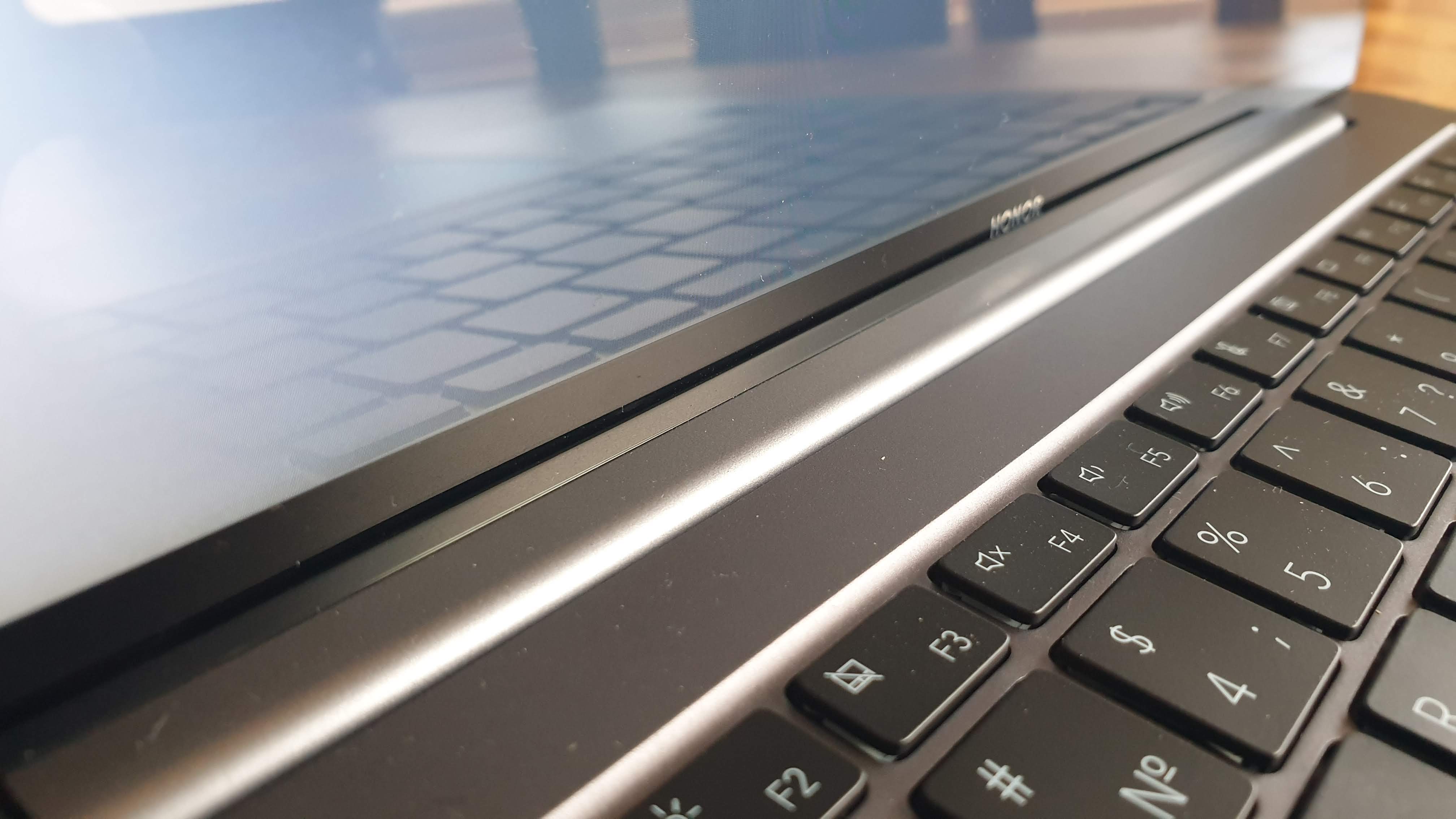
The laptop is surprisingly portable given its screen size. At 227 x 310mm, it is a smidgen bigger than an A4 sheet. Its thickness, 14.5mm, excludes one rubber bar and two rubber feet that lift the base of the laptop to ensure better air circulation. Choosing aluminum over magnesium as primary material for the chassis and glass as the touchscreen overlay explains why the device is heavier than expected, at 1.48Kg.
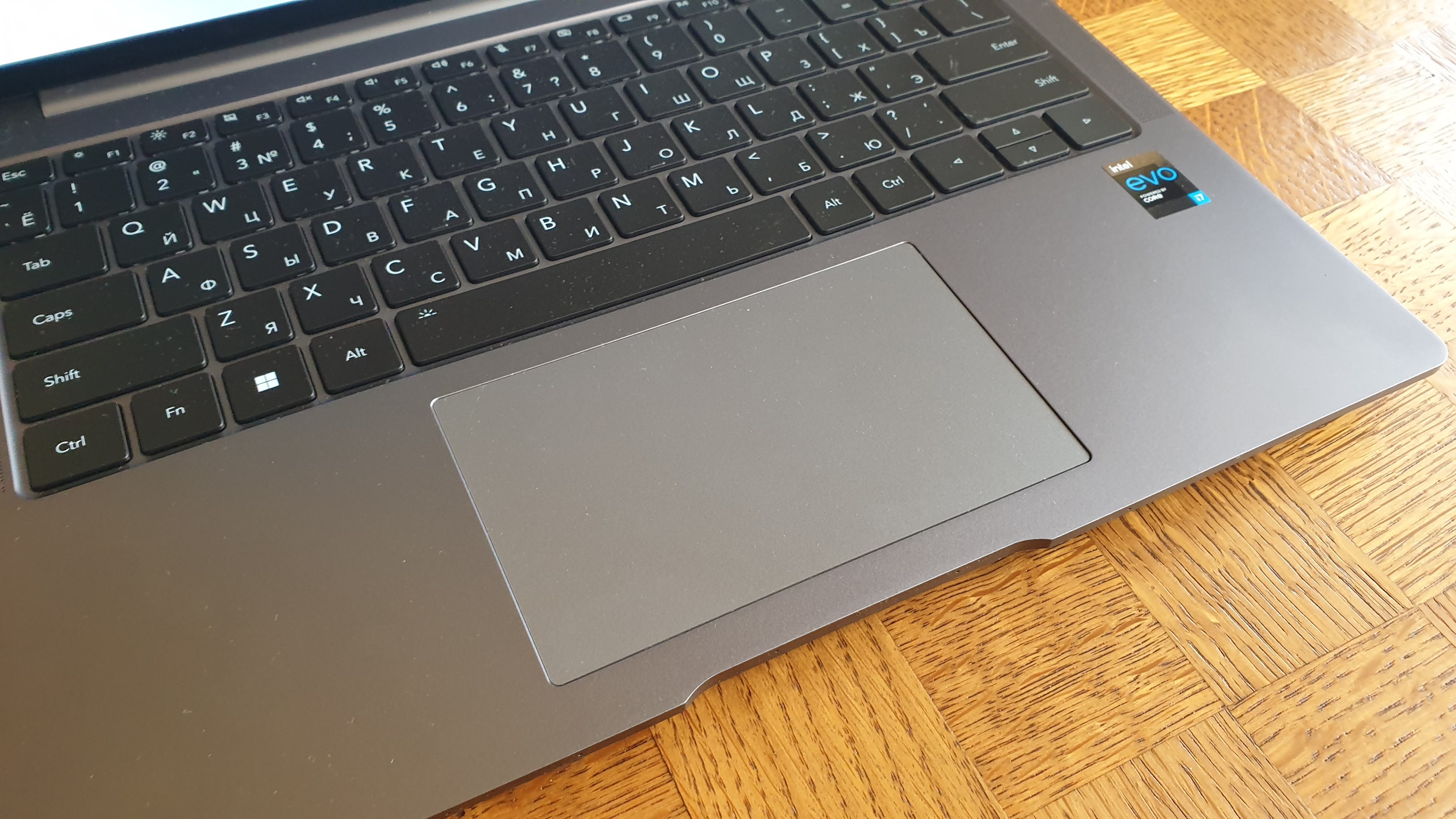
The keyboard is located between two speaker grills (which hide two tweeter drivers) with two other speakers firing towards the base of the device. There’s also a very large touchpad (121 x 72mm), one of the largest we’ve seen on a 14-inch class laptop. Four microphones are located on the front edge of the chassis and only visible as four tiny dots. There’s also a pair of infrared cameras that allows you to face unlock your device, great for securing your laptops using biometric features.
Sign up to the TechRadar Pro newsletter to get all the top news, opinion, features and guidance your business needs to succeed!

As for connectors, there’s a couple of Thunderbolt 4 on the left next to a 3.5-mm audio connector.

A full size HDMI port and USB Type-A connector are located on the opposite side. There’s no card reader and we’d love to have at least one Thunderbolt 4 connected on the right for balance.
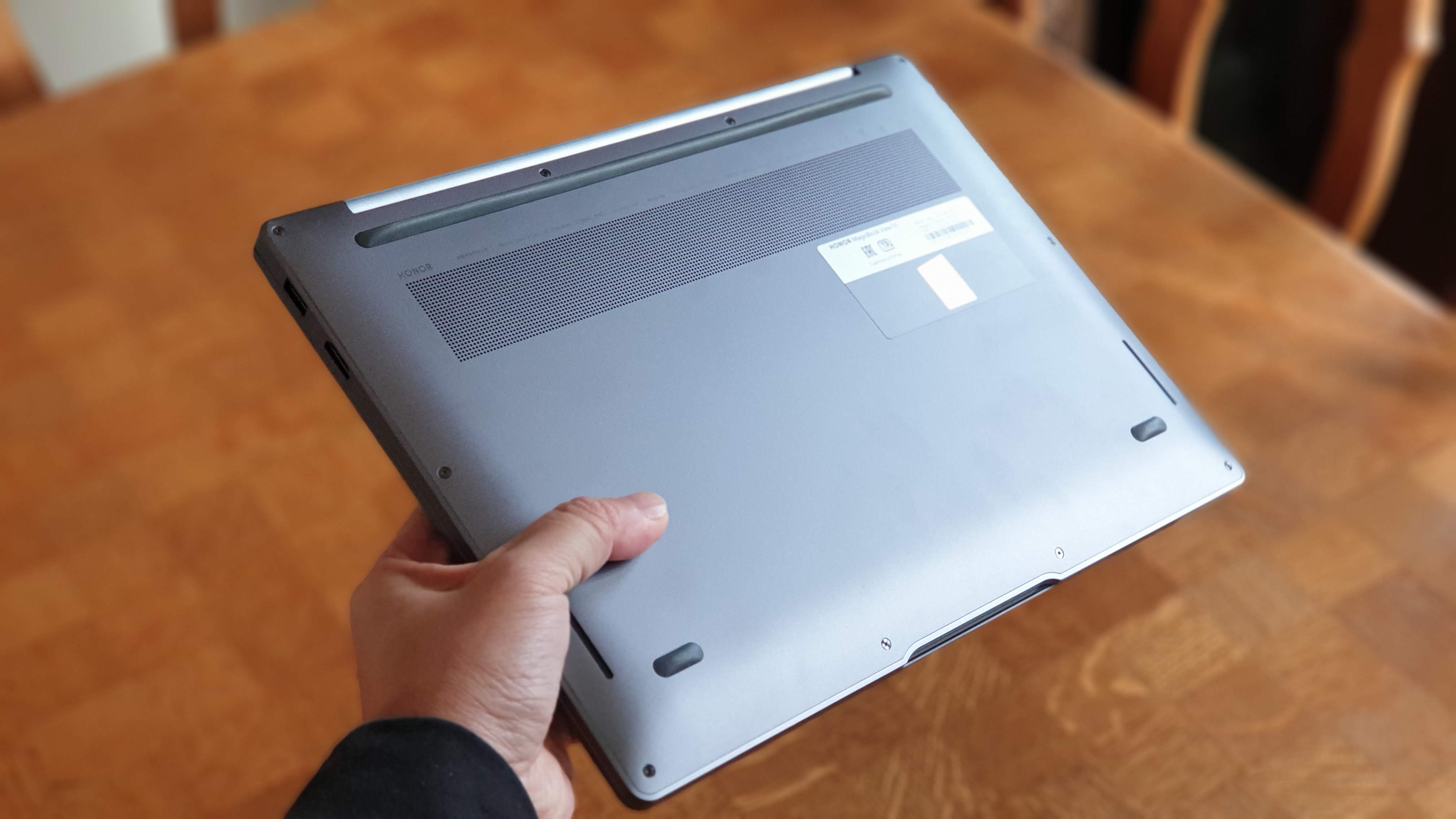
Hardware
An Intel processor, the Core i7-11390H CPU, powered our Russian-sourced laptop. A slower model with an Intel Core i5-11320H processor is also available. To make things a bit more confusing, the Chinese market has a model with a dedicated GPU from Nvidia, the MX450, which the rest of the world doesn’t have.
Here are the full specs of the Honor MagicBook View 14:
CPU: Intel Core i7-11390H
Graphics: Intel Iris Xe Graphics G7
RAM: 16GB DDR4
Screen: 14.2-inch 2520 x 1680 resolution
Storage: 512GB PCIe SSD (Toshiba KXG60ZNV512G)
Ports: 2 x Thunderbolt 4, 1 x USB-A 3.2 Gen 1, 1 x HDMI, audio jack
Connectivity: Intel AX201, Wi-Fi 6, Bluetooth 5.1
Weight: 1.488kg
Size: 227 x 310 x 14mm (H x W x D)
Battery: 56Whr
This is a 10nm product with four cores, eight threads, 12MB cache and a relatively high clock speed that’s matched by the relatively high TDP (35W). The MagicBook View has a high performance mode that kicks the laptop in high gear and sends the TDP to 45W (and gets the fans to whir faster).
The MagicBook View 14 is one of the first laptops to feature a 5-megapixel camera, one that is a breath of fresh air amidst notebooks with low-resolution laptop webcams that are the bane of Zoom and Microsoft Teams video conferencing sessions. It boosts a 90-degree wide-angle view with two camera sensors. There’s no camera shutters but you can turn the camera off by pressing a dedicated button that disables it.
The rest of the specifications includes an Intel Iris Xe Graphics G7 GPU with 96 Execution Units, 16GB DDR4 memory (dual channel for better performance), a 512GB PCIe SSD (Toshiba KXG60ZNV512G), Wi-Fi 6, NFC, Bluetooth 5.1 (courtesy of an Intel AX201 chipset) and a 65W power supply unit.
In use and performance
The MagicBook View 14 runs on Windows 11 Home and an upgrade to Windows 11 Pro is a mere click away. There’s hardly any bloatware (other than what Windows 11 brings in by default); you do get PC Manager though which is Honor’s own all-singing-all-dancing system optimization software package.
Here’s how the Honor MagicBook View 14 performed in our suite of benchmark tests:
Passmark: 2762
Passmark CPU: 14743
CPU-Z: 596 (single-thread); 3310 (multi-thread)
Geekbench: 1665 (single-core); 6405 (multi-core); 20276 (compute)
3DMark: 1981 (Timespy); 5304 (Firestrike); 19034 (Nightraid)
CrystalDiskMark: 3281MBps (read); 2947MBps (write)
Cinebench Multi CPU: 5945
Novabench: 2238
Atto: 3000MBps (read, 256mb); 2760MBps (write, 256mb)
AJA: 2828MBps (read); 2714MBps (write)
Windows Experience Index: 8.2
As expected, the glossy display is very reflective but on the other hand, Honor engineers seem to have slapped a layer of oleophobic substance that mitigates the sticky issue of greasy fingerprints. We can’t stress enough how nice 3:2 aspect ratio displays are and we’d wish more laptop vendors jumped onboard. With a claimed brightness of 400 nits, the View 14 display subjectively produced great colours under various scenarios.
Under load, the system was audible without being unacceptable. The benchmarks unanimously point to a very capable processor with an equally very capable SSD; and boy is this GPU capable! It should outpace entry level Nvidia GPUs like the MX350 or the MX450 which makes it a good match for light or casual gaming.
Perhaps the only real disappointment was the battery life; again things are relative and while 406 minutes on our YouTube benchmark is not that bad, it is still lower than what the MagicBook Pro (intel and AMD versions) scored last year with smaller batteries (56WHr).
The power button integrates a fingerprint reader which makes it ideal as a password or PIN replacement. Shame that the button next to it is the delete button that also doubles as the insert key; something that may cause havoc for fast touch typers.
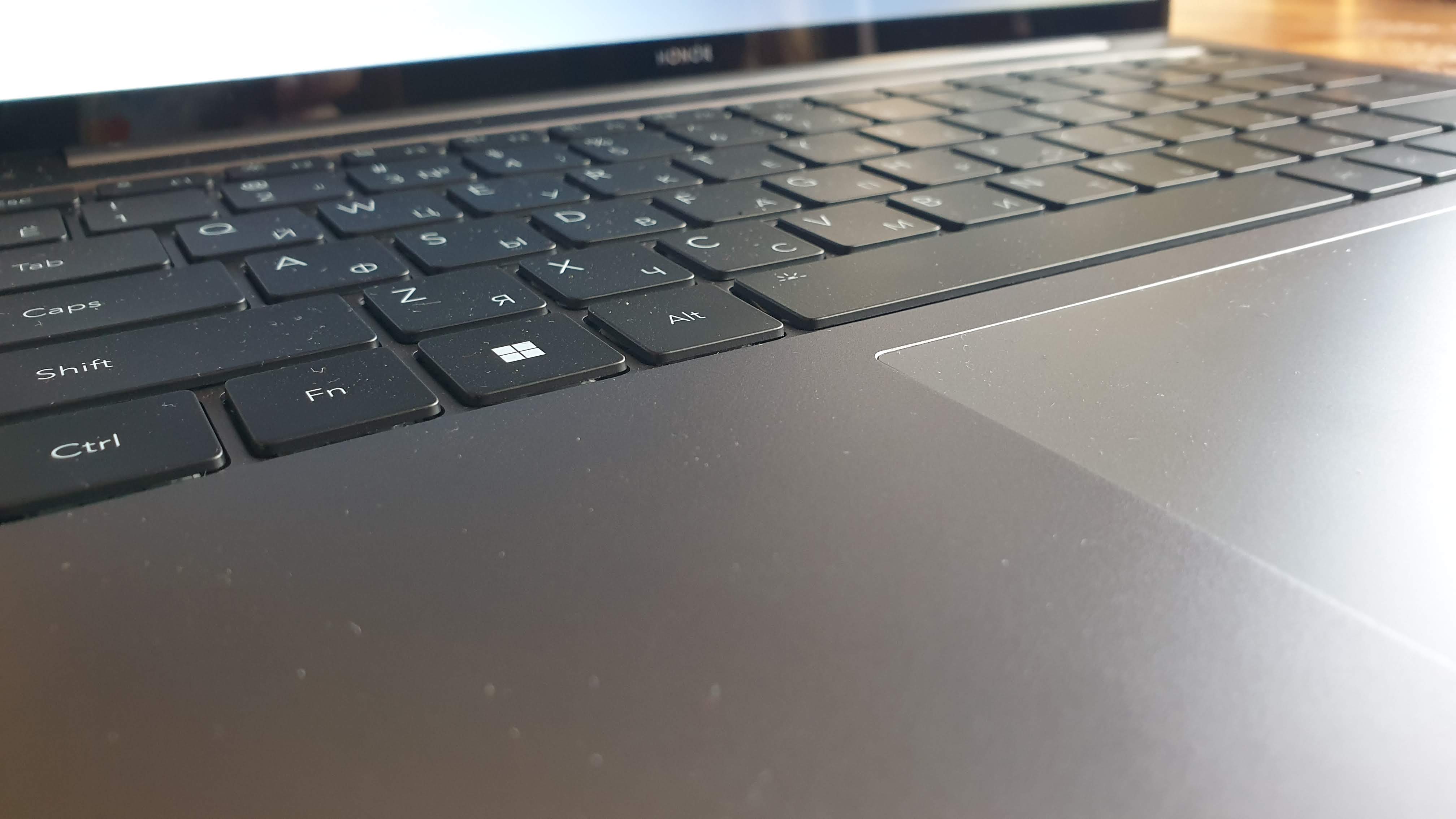
As for the keyboard, it has a comfortable 1.5mm travel and while we can adjust to some of its minor quirks like tiny up/down buttons, others like a dedicated print screen button might be too much for some users. It is a tad noisier than what we’d expect and we do miss the slightly concave surface of Dell Latitude laptop keys.
Should I buy the Honor MagicBook View 14 business laptop?
Buy it if:
You want to run 8K on a budget. You should be able to get this laptop to power - via a compatible adaptor - an 8K display like the LG 55NANO956, a huge but relatively affordable 55-inch television set.
Looks matter (yours and your laptop). The MagicBook View 14 looks great thanks to its premium finish and its 5-megapixel webcam produces sharper, more life-like pictures compared to most other laptop cameras.
Don’t buy it if:
You want an out of the box experience. If you are not a customer in one of the four official territories where the MagicBook View 14 is on sale, then you’re out of luck. An English-speaking customer will face several hurdles; getting it delivered being the least consequential of them.
We've also highlighted the best business laptops

Désiré has been musing and writing about technology during a career spanning four decades. He dabbled in website builders and web hosting when DHTML and frames were in vogue and started narrating about the impact of technology on society just before the start of the Y2K hysteria at the turn of the last millennium.
